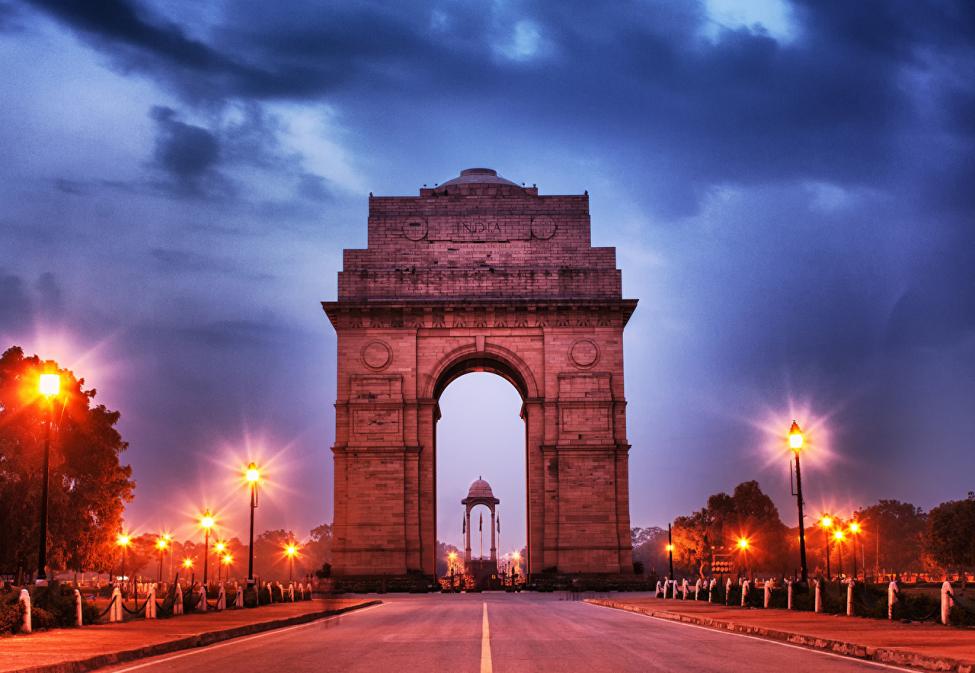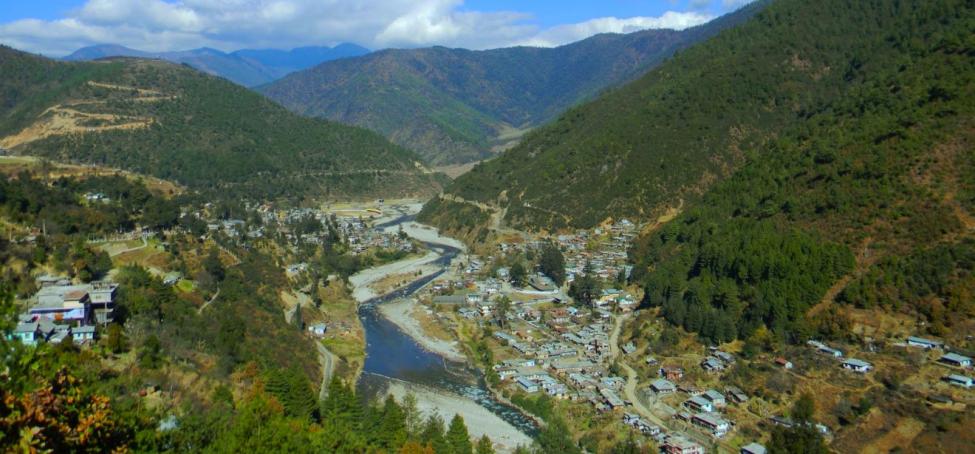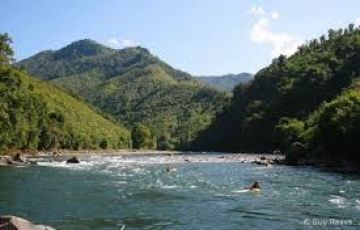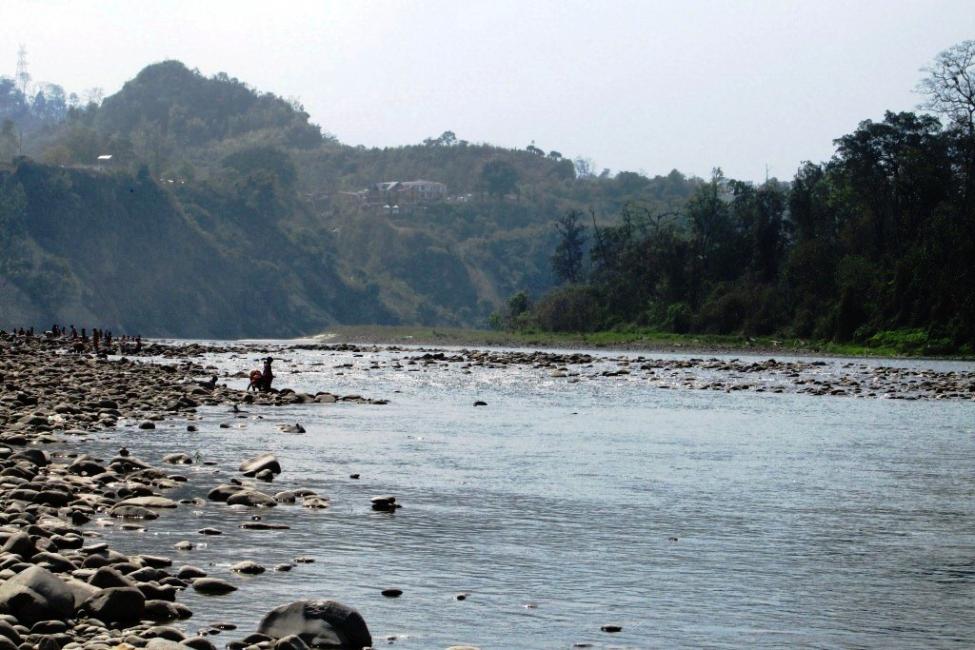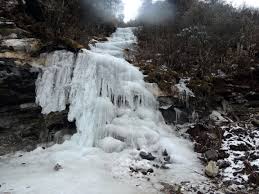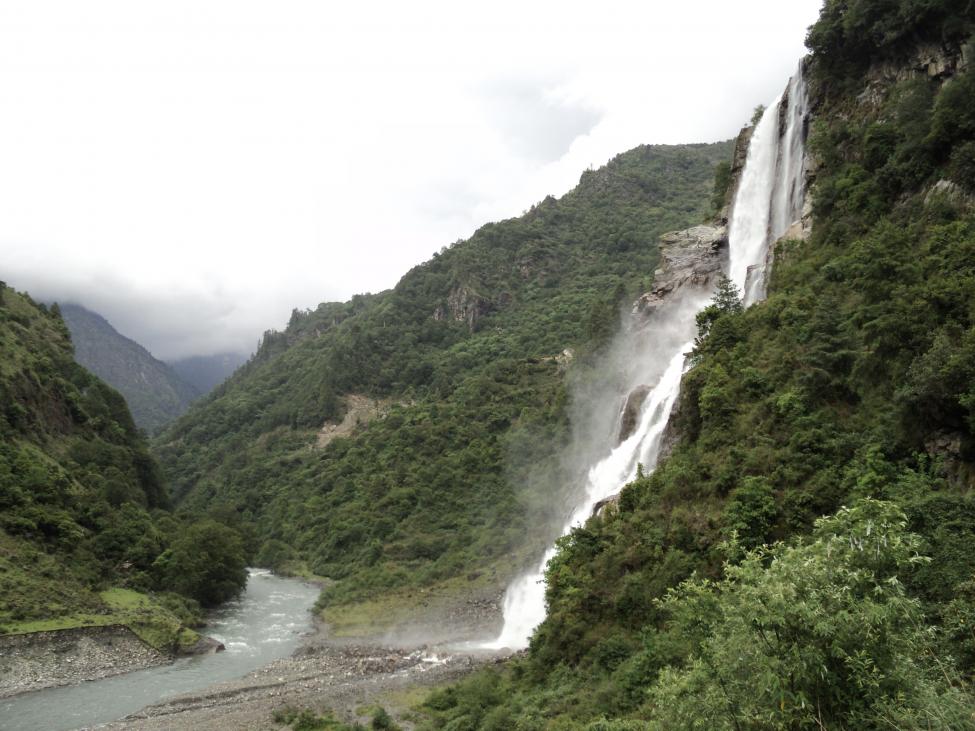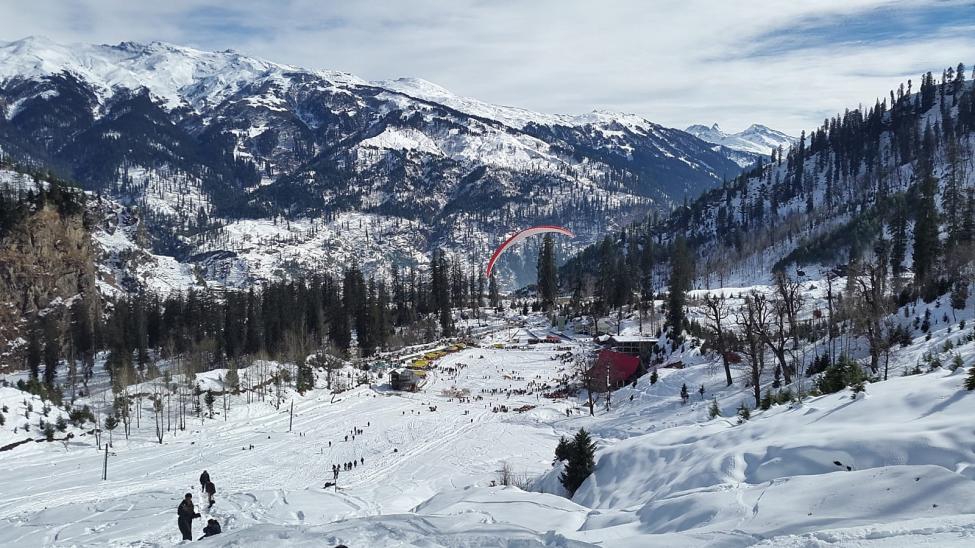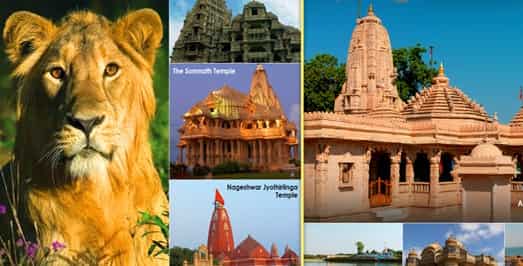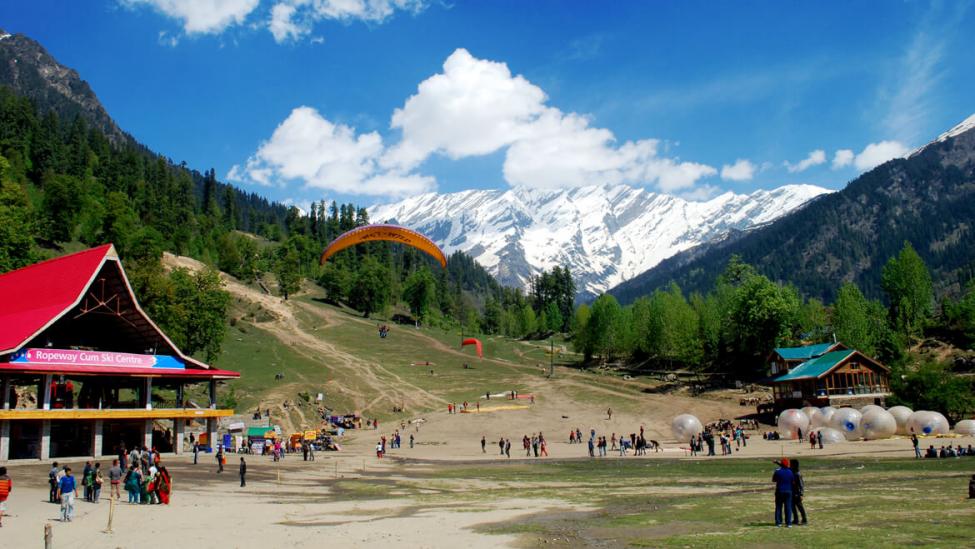
Destinations Cover
Delhi - guwahati - Kaziranga - Cherrapunjee - Bhalukpong - Dirang - Tawang - Bomdila - Nameri - Shillong
Tour Overview
North East India Tour Packages - Ghoomloduniya.com
Day 1: Arrive Delhi
You arrive in Delhi by International flight. After traditional Swagat’ (Welcome) our representative
would assist you at the airport to your hotel for check-in.
Delhi is a bustling metropolis, which successfully combines in its folds the ancient with modern.Its
strategic location was the prime reasons why successive dynasties chose it as their seat of power. In
fact, more mythological cities are believed to be here, like the city of Indraprastha from the Hindu epic
Mahabharata, founded around 5000 BC. Numerous monuments were built over several centuries by
different rulers like Qutub-ud-din Aibek, Alauddin Khilji, Tughlaks, Humayun & Shah Jahan, who built
the Walled City Shah Jahanabad.
Later in first half of 20 th century much of New Delhi was planned by Sir Edwin Lutyens, who laid out a
grandiose central administrative area as a testament to British rule in India. The division in walled city
New Delhi also marks the division in life styles. Overnight Hotel – Delhi (B)
Day 2: Delhi
Attractions: Red Fort, Raj Ghat, Jama Masjid, Chandni Chowk, Qutub Minar, India Gate, President House, India gate, Humayun Tomb
Today we take a guided tour of Old Delhi, the 17 th century walled city of Shah Jahanabad, Visiting the
great Jama Masjid, the principal mosque of Old Delhi. Built in the year 1656 AD by the Mughal
Emperor Shah Jahan, it is the largest & best known mosque in India. Later we walk down or take a
rickshaw ride through Chandni Chowk, the old marketplace of Shah Jahanabad now a picturesque
bazaar to reach Red Fort, built in the year 1648 by Shah Jehan. In New Delhi, we visit Raj Ghat, memorial to the Father of the Nation, Mahatma Gandhi. It is a
simple black marble platform that marks the spot of his
cremation on 31 January 1948. Further we drive past India
Gate, memorial built in the year 1931 to commemorate the
Indian soldiers who died in the World War I & the Afghan Wars.
The names of the soldiers who died in these wars are inscribed
on the walls. President’s House, the official residence of the
President of India, built in the year 1931. Until 1950 it was
known as Viceroy’s House served as the residence of the
Governor-General of British India. We will also visit Humayun’s
Tomb, memorial of Mughal Emperor Humayun, built in the year
1562. The complex is a World Heritage Site & the first
example of this type of Mughal architecture in India. Qutub
Minar built in the year 1206 by Qutub-ud-din Aibek. It is the tallest (72m) brick minaret in the world, an important example of Indo-Islamic Architecture. Qutub Minar its monuments are listed as a
UNESCO World Heritage Site. Overnight Hotel – Delhi (B)
Day 3: Delhi - Guwahati
Attractions: Kamakhya Temple, Umananda Temple,
After breakfast we trasnfer you to board flight to Guwahati. Meeting upon arrival and transfer to our
hotel to check in. Guwahati: Guwahati is Situated on the Southern bank of the mighty River
Brahmaputra in Kamrup district of Assam. Previously it was known as Pragjyotishpur (The City of the
eastern Light) Guwahati is the fast growing premier city and it is also the gateway to the North Eastern
states of India.This city subsequently got the name Guwahati (Guwa-means beetlenut and Hat –means
market in Assamese) Afternoon city tour of Guwahati visiting- Kamakhya Temple: The origin of Kamakhya Temple is
pre Aryan situated atop the Nilachal Hill. The formost shrine of
Assam, The Kamakhya is an ancient seat of Tantric and shakti
Cults of Hinduism. The original temple was destroyed by the
invading Muslims in their crusade against Hindu temples and
idols in the early part of 16th century. Ultimately it was restored
from ruins by King Naranarayan of the Koch dynasty and
rebuilt in its present forming 1665 AD.
Umananda Temple: In the vicinity of Guwahati in the middle of
the river Brahmaputra on an island hill stands the temple of
Shiva ‘Umananda’ (also known as Peacock Island). It is also
known as ‘Bhasmachal’ as the rays that emanated from his
forehead reduce4d Kamdev to ashes. Within the temple are to
be seen the images of Anandi Shiva Linga and a silver ox and Umananda with five faces and ten hands.
Overnight Hotel – Guwahati
Day 4: Guwahati / Shillong
Attractions: Elephant Falls, Wards Lake, Cathedral of Mary Help of Christian, Shillong Golf Course En route visit- Barapani (Umiam Lake), Shillong Peak,
Morning after breakfast depart for Shillong, also know as the Scotland of East.
En route visit- Barapani (Umiam Lake): As per the legends, two heavenly sisters decided to make
their way to Meghalaya. However, one of them had reached the
destination and the other could not due to some reason. So the
former could not traced out her sister and started crying with
her broken heart. She cried so much that and a lake was formed
with her tears. Locally known as Umiam Lake, Barapani means
vast waters.
Today it becomes a hub for the water sports activities such as
speed boats, sailboats and water scooters. Adjoining to the lake,
the Nehru Park offers an aviary and a collection of orchids and
butterflies.
Arrive Shillong and check in at our hotel. Shillong: The Capital of Meghalaya, Shillong is one of the
major tourist destinations in North East India. The British loved this place so much that they had
established its Capital for Eastern Bengal and Assam For its climate and unique topographical features
the British referred Shillong as the “Scottland Of The East”. Overnight Hotel - Shilong
Day 5: Shillong / Cherrapunjee / Shillong
Attractions: Shilong Golf Course,cathedral of Mary Help Christian,Wards lake,Elephant Falls,Mawsmai Cave
Morning after breakfast full day excursion to Cherrapunjee. It’s a small hamlet, situated at an
altitude of about 4823 feet (1484 m). Locally known as ‘SOHRA’.
Cherrapunjee is located in the southern most point of Khasi hill
sharing the border of Sylhet district of Bangladesh. Cherrapunji offers
a panoramic view of the hilly terrains, deep gorges and valleys with its
spectacular waterfalls. It was once having the record of being the
wettest place on earth, with an average rainfall of about 1150ms.
However, this record has been overtaken by a nearby place
Mawsynram. Visit to Nohkalikai falls: This waterfall located 4 kms
away from Cherrapunjee and is possibly between 1500 and 2000 feet
tall. Known to be the fourth longest fall in the world it carries a
pathetic legend behind its name. A woman named Ka Likai had a illegitimate child. After marriage the husband became jealous of her love for her daughter. One day Ka
Likai was out for work and her husband killed the daughter, cooked her flesh into a meal. When the
woman enquired about her daughter, her husband showed the sign of ignorance. Before she went to
look for her daughter, she thought of eating something and had the meal that her husband prepared
for her. After having the meal she found both the wrist of her daughter in the betel-nut basket. Then
she realized what had happened, killed her husband with a dagger and threw herself off this cliff of this
falls. This is how the falls got its name which means “Fall of Ka Likai.”
Mawsmai Cave: This 250m long cave is the major attraction for the tourists in Cherrapunjee. This
cave is located 6 kms away from Cherrapunjee near to Mawsmai
village. This natural limestone cave is wide enough for a person
to walk comfortably, and one can see the myriads of stalagmites
and stalactites all over the caves which are growing gradually.
The caves are dark inside and electric torches are installed for
the convenient of the tourists.
Thangkharang Park: Thangkharang Park is situated 12 km from
Cherrapunjee. The park is the house of various orchids and birds.
One can see the 180 degree view of the plains of Bangladesh on
a clear day.
Later return to Shillong. Visit to Shillong Peak: It is the highest point of Shillong, located in the
upper Shillong an an altitude of 1961 meters (6,433 feet). The name Shillong originated from
“Leishyllong” meaning god who is believed to live on the Shillong peak, overlooking the city. It is
located 5 kilometers away from Shillong and on a clear day one can enjoy the beautiful view of the
entire city.
Elephant Falls: Located in the Upper Shillong 10 kms away from the Shillong town it is one of the
majestic waterfalls in Meghalaya. The water of this three steps
falls comes down in flows from different levels over the fern-
covered rocks and falls into the canyon down below. In the
morning it forms a wonderful sight when the sun rays fall on the
cascades of water creating the rainbow colors. The best time to
visit the waterfalls is during the monsoon when it offers a breath-
taking scenery. The forests covered with ferns and thick bamboo
grooves are also worth visited for the nature lovers to find the
presence of various species of butterflies, birds and orchids.
Wards Lake: Wards Lake is located in the heart of the Shillong
City adjoining to the Governor’s Residence. Shaped like a
horseshoe, it is one of the prominent hang-out spot in Shillong. This century old lake was built by an
engineer named Mr. Pollock. Hence it is also known to be as “Polok’s Lake”. One can opt for boating
and pleasant walks on the cobbled sand stone pathways covered with varieties of flowers. The lake
also has an arched bridge from where one can feed the fish.
Cathedral of Mary Help of Christian: Situated in At Laitumkhrah, it is the largest Cathedral in
Meghalaya attracts thousands of devotees. The colorful glasses of the skylight window along with the
paintings of the Jesus spreading the messages of God are influenced by the European art and
architecture.
Shillong Golf Course: Shillong Golf Course is termed as the “Glen-eagle of the East” at the United
States Golf Association Museum. The Golf Course is situated in a valley covered with thick groves of
pine and rhododendron trees at an altitude of 5200 ft. Previously it was a nine hole course and later
converted into a eighteen hole course in 1924 by Captain Jackson and C. K. Rhodes. It is the third
oldest Golf Course in India. Overnight Hotel - Shilong
Day 6: Shillong / Kaziranga National Park
Attractions: Jungle safari , 500 species of birds, Monitor Lizard, Indian python, King Cobra
Morning after an early breakfast depart for Kaziranga National Park.
Kaziranga National Park: Kaziranga National Park has become synonymous with successful
conservations of Great One Horn Rhinoceros (from the Greek
word, “rhino” means nose and "ceros" means horn) / Unicornis
(from the Latin word, means one and cornis also means
horn) and also a home of may other threatened species
including Indian Elephant (Elephant Maximus), Tiger(Panthera
tigris), Hoolock Gibbon (Bunipithecus hoolock), Ganges dolphin
(Platanista gangetica),Sambar (Cervus unicolor), Barasingha or
Swamp Deer (duvauceli), Hog Deer, Indian Muntjac (Muntiacus
muntjak), Water Buffalo (Bubalus bubalis) and Gaur (Bos
frontalis)etc.
There are also over 500 species of birds have been recorder in the park including 25 specis of globally
threatened category. Over and above there are 21 rare and endangered species. In winter one can
observe a large breeding population of Spot Bill Pelicans about one thousand breeding nests are found
in a place which has been named as Pelican Colony in the Eastern Range.
Among the reptiles species like Water Monitor Lizard (Varanus salvator), Indian python (Python
molurus), Cobra (Naja naja) and the King Cobra are found.
Arrive Kaziranga and check in at our Resort. Overnight Resort - Kaziranga
Day 7: Kaziranga National Park
Attractions: Elephant Jungle Safari
Early morning enjoy the elephant jungle safari in the central (Kohora) range of Kaziranga. Later
return to the resort for breakfast.
Afternoon enjoy the ethnic cuisine in the NATUNDENGA Karbi village adjoining Kaziranga National Park
(Optional): Late afternoon enjoy the jungle safari in the western (Bagori) range of Kaziranga.
Overnight at the resort.
Day 8: Kaziranga / Bhalukpong
Attractions: picturesque spot for angling and leisurely picnics
Morning after an early breakfast depart for Bhalukpong en route stop at Tezpur
Tezpur: Modern day Tezpur, the headquarter of Sonitpur district of Assam is said to be erstwhile
Sonitpur, the Kingdom of legendary King Banasura. According to the legend when Lord Krishna army
and Banasura army fought for the rescue of Aniruddha (grandson of Lord Krishna) who married
Banasura’s daughter ‘Usha’ against the will of her father there was so much bloodshed that the whole
place was stained in red. This prompted to the name of the place becoming Tezpur (means the City of
Blood). Modern Tezpur was founded by the British colonial administration in 1835 as the headquarters
of Darrang
In Tezpur visit: Agnigarh: According to the legend the site of the fortress was built by Banasura to
keep his daughter Usha in isolation. The name ‘Agnigarh’ has
been derived from two Sanskrit words Agni’ (meaning fire) and
garh (meaning fortress or wall). It is a hill on the banks of the
Brahmaputra river and one of the big tourist attractions in
Tezpur. The view of river Brahmaputra the Kolia Bhomora Setu
bridge(named after the Ahom general Kolia Bhomora) is really
eye catching.
Mahabhairav Temple: This ancient Shiva Temple located in the
heart of Tezpur town is believed to have been established by
king Banasura in the pre-historical times. The temple was
originally built of stone but renovated and built with concrete.
During Shivaratri thousands of devotees around the country visit the temple and offer their prayer to
Lord Shiva.
Later drive to Bhalukpong. Situated on the Assam-Arunachal border, 250 kms from Guwahati,
Bhalukpong is another picturesque spot for angling and leisurely picnics. Arrive and check in at our
hotel. Evening free at leisure Overnight Hotel - Kazianga
Day 9: Bhalukpong / Dirang
Attractions: Apple Nursery, Kiwi Farm, Yak Research Centre, Buddhist Gompa, Hot Water Spring and ancient Dirang Jong (Fort)
Morning after breakfast depart for Dirang En route visit - Tipi Orchid Sanctuary and Research Center:
An Orchidarium at Tipi (5 kms from Bhalukpong) on the way to Bomdila is the Botanical paradise.
About 300 species of orchids can be seen in the flora – glass house. Some of them are rare and
endangered species. By the side of the glass house there is an orchid museum too.
Arrive Dirang and check in at hotel. Dirang: Dirang 40 kms from Bomdila is situated at an altitude of
1497 meters. It is an ideal hill resort in West Kameng district with beautiful Apple Nursery, Kiwi Farm,
Yak Research Centre, Buddhist Gompa, Hot Water Spring and ancient Dirang Jong (Fort). It is the base
camp for trekking to Gorichen peak and other bird watching trails. Rest of the time free at
leisure.Overnight Hotel - Dirang
Day 10: Dirang
Morning after breakfast explore the Dirang visiting the natural hot spring, Apple gardens and the Yak
Breeding farms. After explore the sangti valley Sangti Valley: At a
distance of 12 Kms. beyond Dirang is the famed Sangti Valley,
Sangti is dotted with numerous picturesque spots, which are ideal
for holidaymakers. One of the prime attractions is a sheep
breeding farm. The other one being the Chuskar (traditional water
mill), a flour mill system using hydro power, which is used by the
villagers to grind the
millets. The Sangti valley is the favored tourist destination for avid
bird watchers as well as it is home to the endangered back necked
cranes during winter months which come to nest here from Tibet.
Overnight Hotel - Dirang
Day 11: Dirang / Tawang
Attractions: Tawang Monastery, Urqelling Monastery & Tawang War Mermorial
Morning after breakfast depart by car for Tawang.
En route visit Jaswant Garh: The war memorial is located 14 kms from Sella Pass on the way to
Tawang. The memorial pay homage to Jaswant Singh Rawat,
Mahavir Chakra Awardee posthumous (the second highest award
from the Indian Army). In the famous battle of Nuranang against
Chinese in November 1962, Rawat and two other soldiers from
4th Batallion Garhwal Rifles were instrumental in killing 300
Chinese soldiers in 72 hours.
Sella Pass: The entry point into the Tawang Valley is Sela pass
at an elevation of 13700 ft above the sea level.. Legend says that
a monpa woman supported sepoy Jashwant Singh during his
battle with the Chinese. She brought sepoy Jashwant supplies and used to heal his wounds. When
Jashwant got martyrdom she killed herself as an act of loyalty.
The glimpse of Paradise Lake in the Sella Pass makes your visit worth. Most of the time the lake is
covered with thick blanket of snow. Arrive Tawang and check in at hotel. Evening free at leisure.
Overnight Hotel - Twang
Day 12: Tawang
Morning after breakfast explore Tawang, Tawang Monastery (Vihar): Tawang Monastery about 400
years old, situated at an altitude of approximately 10,000 ft. is the second largest Buddhist monastery
in India. It also holds the distinction of being the birthplace of the 6th Dalai Lama. The monastery is
the house of more than 700 monks. The monastery was founded by Merag Lama Lodre Gyamtso, in
1681 in accordance to the wishes of the 5th Dalai Lama, Nagwang Lobsang Gyatso. As per the legend,
the site of the Monastery was chosen by the horse of Merag Lama. Merag Lama, who had been unable
to decide a site to establish the monastery. One day he was praying in cave, seeking a divine
guidance. When he came out after the prayers, he found his horse was missing. On search, the horse
was located standing quietly on a hilltop. Considering that as the
sign of divine blessing he decided to construct the monastery at
the very spot. The monastery is also called Galden Namgey Lhatse
meaning celestial paradise. There is a magnificent 8 meter high Morning after breakfast explore Tawang, Tawang Monastery (Vihar): Tawang Monastery about 400
years old, situated at an altitude of approximately 10,000 ft. is the second largest Buddhist monastery
in India. It also holds the distinction of being the birthplace of the 6th Dalai Lama. The monastery is
the house of more than 700 monks. The monastery was founded by Merag Lama Lodre Gyamtso, in
1681 in accordance to the wishes of the 5th Dalai Lama, Nagwang Lobsang Gyatso. As per the legend,
the site of the Monastery was chosen by the horse of Merag Lama. Merag Lama, who had been unable
to decide a site to establish the monastery. One day he was praying in cave, seeking a divine
guidance. When he came out after the prayers, he found his horse was missing. On search, the horse
was located standing quietly on a hilltop. Considering that as the
sign of divine blessing he decided to construct the monastery at
the very spot. The monastery is also called Galden Namgey Lhatse
meaning celestial paradise. There is a magnificent 8 meter highMorning after breakfast explore Tawang, Tawang Monastery (Vihar): Tawang Monastery about 400
years old, situated at an altitude of approximately 10,000 ft. is the second largest Buddhist monastery
in India. It also holds the distinction of being the birthplace of the 6th Dalai Lama. The monastery is
the house of more than 700 monks. The monastery was founded by Merag Lama Lodre Gyamtso, in
1681 in accordance to the wishes of the 5th Dalai Lama, Nagwang Lobsang Gyatso. As per the legend,
the site of the Monastery was chosen by the horse of Merag Lama. Merag Lama, who had been unable
to decide a site to establish the monastery. One day he was praying in cave, seeking a divine
guidance. When he came out after the prayers, he found his horse was missing. On search, the horse
was located standing quietly on a hilltop. Considering that as the
sign of divine blessing he decided to construct the monastery at
the very spot. The monastery is also called Galden Namgey Lhatse
meaning celestial paradise. There is a magnificent 8 meter highMorning after breakfast explore Tawang, Tawang Monastery (Vihar): Tawang Monastery about 400
years old, situated at an altitude of approximately 10,000 ft. is the second largest Buddhist monastery
in India. It also holds the distinction of being the birthplace of the 6th Dalai Lama. The monastery is
the house of more than 700 monks. The monastery was founded by Merag Lama Lodre Gyamtso, in
1681 in accordance to the wishes of the 5th Dalai Lama, Nagwang Lobsang Gyatso. As per the legend,
the site of the Monastery was chosen by the horse of Merag Lama. Merag Lama, who had been unable
to decide a site to establish the monastery. One day he was praying in cave, seeking a divine
guidance. When he came out after the prayers, he found his horse was missing. On search, the horse
was located standing quietly on a hilltop. Considering that as the
sign of divine blessing he decided to construct the monastery at
the very spot. The monastery is also called Galden Namgey Lhatse
meaning celestial paradise. There is a magnificent 8 meter high statue of Lord Buddha. The ancient library inside the courtyard has an excellent collection of thangkas,
painted with the blood from the nose of 5th Dalai Lama and valuable Buddhist manuscripts mainly
Kanjur and Tanjur numbering 850 bundles.
Urqelling Monastery: It is the birthplace of the 6th Dalai Lama who is the only Indian to have risen to
such a high position in Gelupka Sect of Buddhism so far. Inside the monastery there are several
Stupas (Vihar) and people from all walks of life visit this place during Buddhist new year to get the
blessing for the coming year.
The Craft Center: The craft center in Tawang sells beautiful masks, hand woven carpets, jewellery in
silver, coral and amber, ‘chubas’ the local dressand delightful affordable mementos.
Tawang War Memorial: The memorial is dedicated to the martyrs of the 1962 Sino-Indian war. The
memorial is 40-foot-high and like a stupa in design. It is locally called ‘Namgyal Chortan’. The names
of 2420 martyrs imprinted in gold on 32 black granite plagues. Overnight Hotel - Twang
Day 13: Tawang / Bomdila
Attractions: landscape and snow-clad Gorichen ranges , Bomdila Monastery
Morning after breakfast depart for Bomdila en route stop at the Nuranang falls.
Arrive Bomdila and check in at our hotel. Bomdila: On the way to
Tawang , situated at height of 8500 ft (distance from Tezpur 180
kms), Bomdila is a picturesque town in the foothills of Himalayas
and the headquarter of West Kameng District the land of the
Monpa, Sherdukpen, Aka (Hrusso), Miji and Bogun (Khawas)
tribes. One can see the brilliant landscape and snow-clad Gorichen
ranges of the Himalaya on a clear day. With its apple orchards,
Buddhist gomphas and a magnificent view of the Kameng Valley
Bomdila can be named as a mini paradise. Bomdila is also an ideal
place for nature lovers with several trekking and hiking trails are
now opened for the adventure seeker.
Places of interest:
Later visit to Bomdila Monastery: The monastery has been built under the guidance of Dalai Lama.
It is a residence of more than 200 Buddhist monks. From the monastery
one can have the breathtaking view of the entire Bomdila. The time of
pray is in dawn and dusk, attending which, one can have the absolute
peace of mind.
Also visit craft center, where very fine wooden carpets of colourful
designs and Masks are produced.
Bomdila also offers a Bird eye view of Kangto and Gorichen peaks
(highest peaks in the state) amidst the Himalayan landscape and snow
clad ranges. Overnight Hotel - Bomdila
Day 14: Bomdila / Nameri National Park
Attractions: Nature walk & Bird Watching, River Cruise in Brahmputra river
Morning after breakfast depart for Nameri National Park: 200 sq kms area is located in the Sonitpur
district, bordering Arunachal Pradesh and it is also the core area
of Nameri Tiger Reserve (344sq kms). It is the home of
Mammals like Elephant, Tiger, leopard, Sambar,Barking deer,
Hog Deer, Wild Boar,Gaur, slow loris,gaplangur,Burmese ferret
badger, and over 350 species of birds including White-winged
Wood Duck, Ibisbill (uncommon), Ruddy Kingfisher, Palla’sfishing
eagle,Lesser Adjutant stork , Greater spotted eagle,Rufous
necked hornbill, Great pied Indian hornbill, Wreathed hornbill,
Long-billed Ringed Plover, Sultan Tit, and Yellow-bellied and
White-throated Fantails. Another important wild life sanctuary of Arunachal Pradesh The Pakhui
(Pakke) wild life Sanctuary adjoins the Park on its North-Eastern point. The river Jia- Bhoroli and its
tributaries namely the Diji, Dinai, Doigurung, Nameri, Dikorai, Kharietc crisscross the park. During rainy season A few jheels (during the rainy seasons) also dot the area. One can enjoy rafting in the Jia
Bhoroli river in the south western boundary.
Arrive and check in at Eco Camp. Rest of the time free at leisure Overnight Hotel - Nameri (L, D).
Day 15: Nameri / Guwahati
Early morning go for the nature walk and the bird watching trip into the dense jungle of Nameri
National Park with the forest guards. After breakfast depart for Guwahati. Arrive Guwahati and check
in at hotel. Evening enjoy the river cruise in the Brahmaputra river. Overnight Hotel - Guwahati
Day 16: Guwahati - Delhi
Morning after breakfast in time transfer to the Guwahati airport to board the flight for Delhi. Upon
arrival in Delhi transfer to Hotel.
Day 17: Delhi departure
In time transfer to International Airport to board the flight back home.
Inclusions / Exclusions
The Price Includes:
- Accommodation in Rooms in Hotels Chosen by Guest (As Per Availability)
- Daily Breakfast At The Hotel
- Transportation In An Air –Conditioned Vehicle With Driver Assistance Of Our
- 01 Mineral Water Bottle Per Person per Day.
- Monks & Monkeys Surprise Departure Gift.
- All Applicable Taxes Like Fuel Charge, Parking Charge & Tall Taxes
- All Government Taxes GST 4.50 % (Till Date)
The Price Excludes:
- Domestic Flights & Airport Departure Tax From India (This Is Generally Included In Your Ticket)
- Any Meals Except Mentioned In The Column Prices Includes.
- Any Expenses Of Personal Nature Such As Tips Beverages, Laundry, Telephone Calls, Photography, Entrances And Video Fees, Etc.
- Any New Taxes / Fees Imposed By The Government




